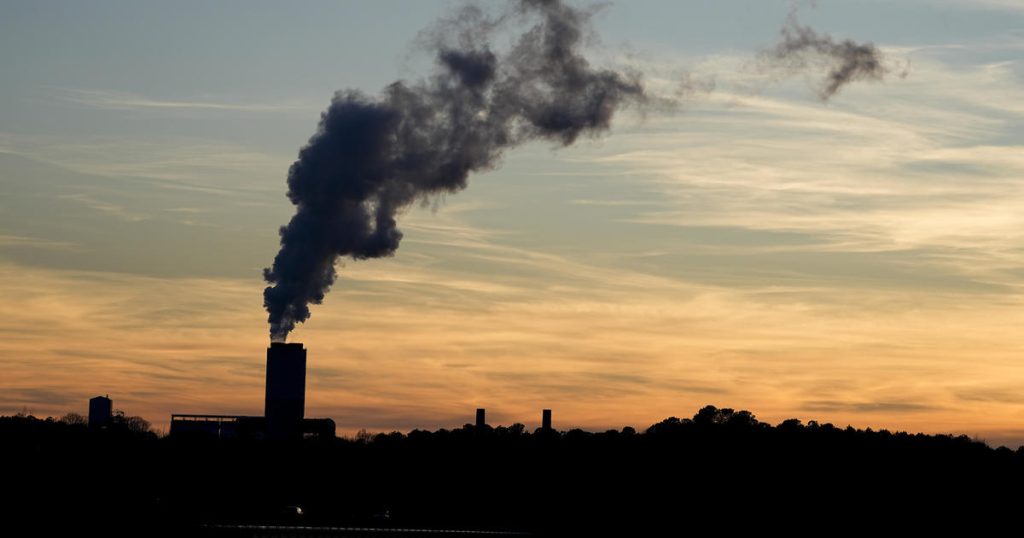The Environmental Protection Agency issued new rules on Thursday that would require coal-fired power plants to capture smokestack emissions or shut down. These rules are part of the Biden administration’s efforts to reduce greenhouse gas emissions from the power sector, with a goal of eliminating carbon pollution from the electricity sector by 2035 and economy-wide by 2050. The rules also target toxic wastewater pollutants from coal-fired plants and the management of coal ash in storage ponds. EPA Administrator Michael Regan emphasized that these rules would reduce pollution, protect communities, and improve public health while supporting the transition to a clean energy economy.
The new rules mark the first time the federal government has restricted carbon dioxide emissions from existing coal-fired power plants. Future electric plants fueled by coal or gas will also be required to control up to 90% of their carbon pollution. The EPA estimates that these standards will avoid 1.38 billion metric tons of carbon pollution through 2047, resulting in significant climate and health benefits. However, the rules are likely to face challenges from industry groups and Republican-leaning states who claim that these regulations are overreaching and could lead to a reliability crisis on the electric grid. Despite assurances from the EPA that the rules are not intended to shut down the coal sector, some coal plants are expected to retire as a result of these regulations.
Environmental groups have praised the EPA’s actions as urgently needed to address the harms of climate change. The power plant rule is seen as a key step in reducing carbon pollution from the power sector, along with other EPA rules targeting tailpipe emissions from cars and trucks and methane emissions from oil and gas drilling. These actions are considered the most significant reductions in carbon pollution ever made in the country and are crucial in moving towards zero carbon emissions. Despite the challenges that remain in eliminating carbon from other sectors, such as transportation and heavy industry, cleaning up power plants is seen as a critical step in addressing climate change.
Industry groups, however, have criticized the EPA rule, calling it unlawful, unrealistic, and unachievable. Some industry representatives have warned of potential court challenges to the rules, citing concerns about the reliability of the electric grid and the readiness of new technologies to meet the emission standards. The regulations do not mandate the use of carbon capture equipment but instead set caps on carbon dioxide pollution that plant operators must meet. The rules also aim to address toxic wastewater pollution from coal plants and prevent harm from coal ash waste byproducts through the safe closure of inactive coal ash ponds and cleaning up contamination.
Overall, the EPA’s new rules represent a significant step towards reducing emissions from fossil fuel-fired power plants and addressing climate change. While the regulations are expected to face challenges from industry groups and some states, environmental groups view them as essential for protecting the environment and public health. The rules are part of a broader effort by the Biden administration to transition towards a clean energy economy and achieve ambitious targets for reducing carbon pollution in the coming decades. The impact of these regulations on the energy sector and the environment will continue to be a topic of debate and discussion as they are implemented.


